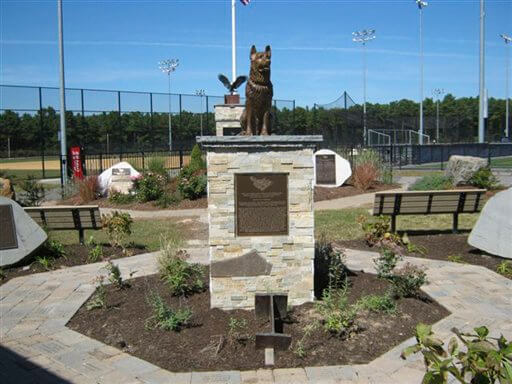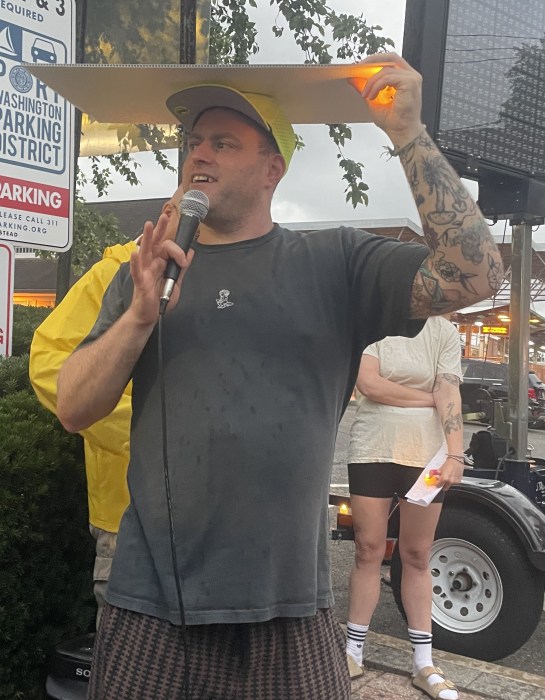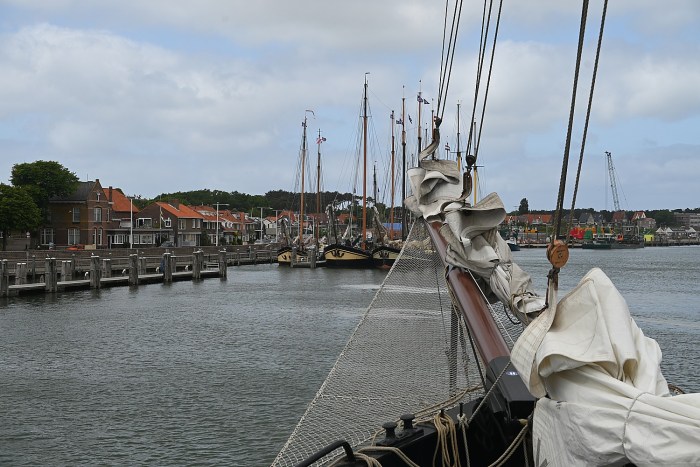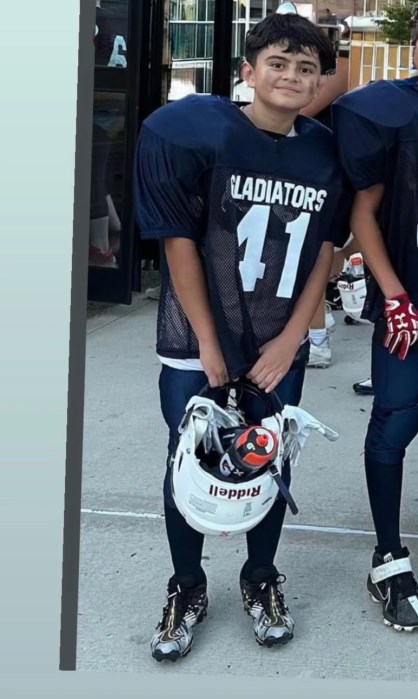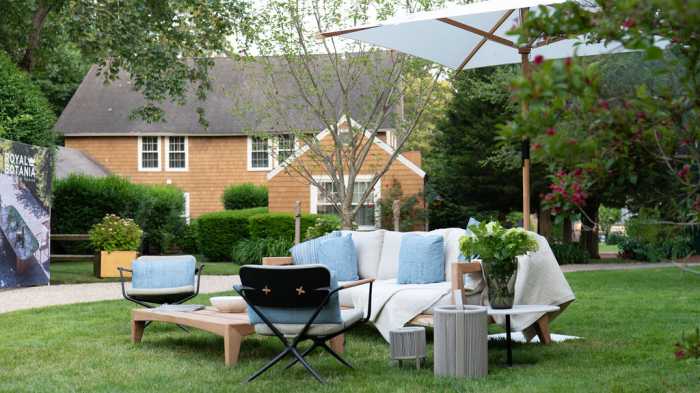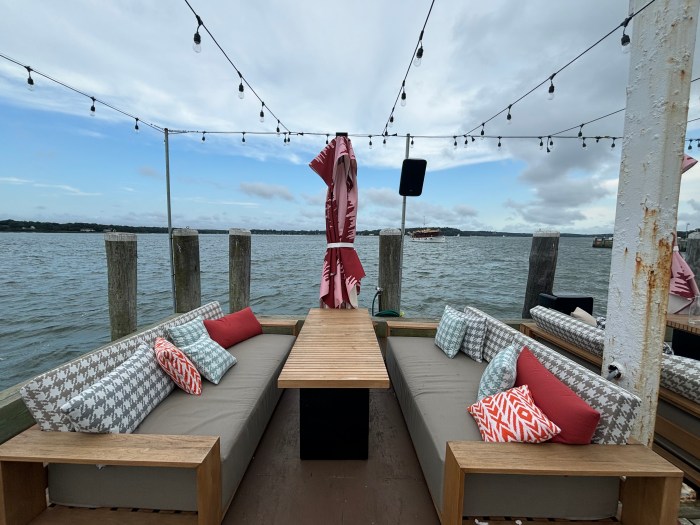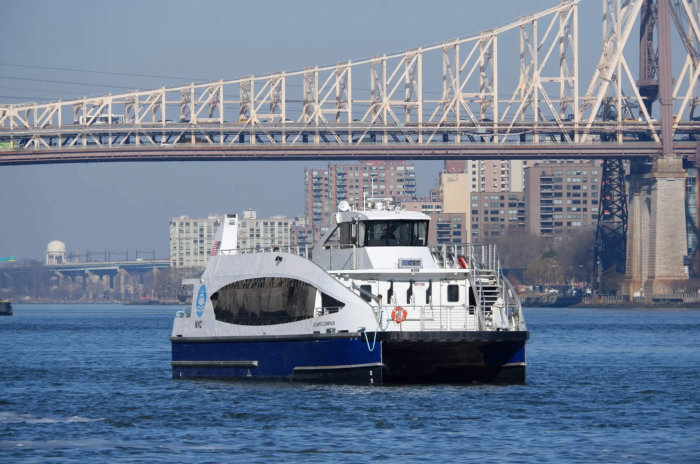
When terrorist-piloted airliners brought down the Twin Towers, rescuers immediately set to work scouring the rubble for survivors. Rescue dogs were an invaluable part of the effort as they used their powerful sense of smell to search out people buried beneath the debris.
Those four-legged rescuers now have a monument to commemorate their hard work and dedication, thanks to a West Virginia artist.
Morgantown sculptor Jamie Lester created the 36-inch, life-size sculpture of a German shepherd that now sits in the Diamond in the Pines Park on Long Island.
It was unveiled on Sept. 11 of this year, the 11th anniversary of the terrorist attacks.
Although Lester is an accomplished bronze artist — he’s completed hundreds of works for clients around the county — it is not the career path he envisioned when he was an undergrad at West Virginia University.
He graduated in 1997 after studying visual art with a focus on ceramics. He hasn’t done much ceramic work since college, however. His daughter, Hannah, was born shortly after he graduated, and he quickly realized there wasn’t much money in making gallery pieces.
“I was kind of motivated by that to find a way to make some money with my art. I couldn’t afford to be a starving artist.”
He got a contract with a foundry in Kingwood and spent two years there doing portrait sculptures. Once the contract was up, he started doing more work on his own.
Lester has now done commissioned pieces for foundries and clients all over the United States. He contributed a bronze sculpture to the Brooklyn Wall of Remembrance, which commemorates the Brooklyn firefighters who died in the 9/11 attacks. Each year, he makes bronze-relief busts of new inductees to the World Golf Hall of Fame in St. Augustine, Fla.
His most famous creation has probably jingled in your pocket. Lester’s design of the New River Gorge Bridge was picked to adorn West Virginia’s state quarter, released in 2005 as part of the U.S. Mint’s 50 State Quarters program.
Lester also has produced several notable works for West Virginia University. He crafted the life-size Jerry West statue that stands in front of the WVU Coliseum, as well as the bust of broadcaster Jack Fleming that sits inside the Erickson Alumni Center.
He returned to his alma mater to cast his latest bronze piece.
Lester said he usually contracts with foundries to bronze his works but wanted to have more control in the process this time around. He contacted WVU and asked if he could use the art department’s foundry.
“It ended up being the biggest piece they’d ever cast there,” he said.
He began the sculpture in June, building the dog from wet clay.
Although he briefly studied a neighbor’s German shepherd as a reference, Lester said he mostly relied on photos from the Internet when making his sculpture. Dogs don’t usually have the patience to sit for an artist.
His finished work is actually a composite of many dogs. Lester said he picked attributes of different animals to build an image that would convey the dogs’ “good-heartedness.”
“If they’re doing their job and they’re not finding anybody, they really get down about it. Their body language just starts to change. It’s obvious these dogs are really dedicated to what they do,” he said.
Once the clay sculpture was finished, Lester used it to create rubber molds. He made a wax cast using molds and then used that cast to make another, “monolithic” plaster mold.
He fired those molds and with the help of several WVU art students made a bronze cast.
“It came out beautifully,” he said.
The dog had to be cast in four separate pieces, so Lester hired John Logewski, a Morgantown welder, to put it back together.
“I didn’t want to make any errors,” he said.
That was the only part of the process Lester didn’t do himself. Once Logewski had the shepherd reassembled, Lester set to work grinding and shaving the metal to make the welds appear seamless and put finishing touches on the sculpture.
He then polished the piece and applied a patina to give the dog its intended coloring.
“Rarely do I do all of that, so it was pretty cool,” he said.
The statue now sits on a tall stone pedestal with a plaque explaining the crucial role rescue dogs played in the aftermath of the Twin Towers’ collapse.
The original clay sculpture is sitting in front of Lester’s South Pierpont Street studio in Morgantown, melting in the rain. Lester said that’s just part of the process. The rubber he uses to make the molds ruins the clay.
“The clay is a means to an end,” he said.
Although his German shepherd statue will stand on Long Island for years to come, he’s already moved onto his next work. Lester has been making bronze statues for 15 years now and is busier than ever.
“It seems like the more time I work in it, the more opportunity I get to do more work. I’m having a fun time with it,” he said.
___
Information from: Charleston Daily Mail, http://www.dailymail.com
Copyright 2012 The Associated Press.




